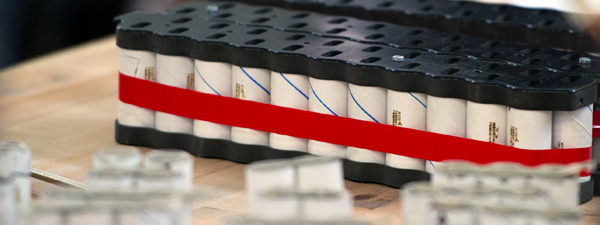Scientists at the Paul Scherrer Institute (PSI) and the Toyota Central R&D Labs have reported a memory effect in lithium-iron phosphate (LiFePO4) batteries that appears after only one cycle of partial charge and discharge. Memory effects are well known to users of nickel-cadmium and nickel-metal-hydride batteries. If these batteries are recharged repeatedly after being only partially discharged, they gradually lose usable capacity owing to a reduced working voltage. Lithium-ion batteries, in contrast, are widely considered to have no memory effect.
Their findings, which were published in the journal Nature Materials, could have important implications for battery management systems, as the slight voltage change caused by the memory effect could result in substantial miscalculations in estimating the state of charge of batteries.
“Ours is the first study that has specifically looked for a memory effect in lithium-ion batteries. It had simply been assumed that no such effect would arise,” said Professor Petr Novak, one of the study’s authors. “The effect is in fact tiny: the relative deviation in voltage is just a few parts per thousand. But the key was the idea of looking for it at all. Normal battery tests usually run deep, and not partial charging/discharging cycles. It thus took a flash of inspiration in order to ask what might happen during partial charging in the first place.”
With lithium-iron phosphate, the voltage remains practically unchanged over a large range of the state of charge. This means that even a small difference in the operating voltage could be misinterpreted as a major change in the state of charge. In other words, when the state of charge is determined from the voltage, a large error can be caused by a small deviation in the voltage.
In hybrid cars in particular, the effect can arise during the many cycles of charging/discharging that occur during their normal operation. The many successive cycles of partial charging and discharging lead to individual small memory effects that could add up to an error in the estimate of the current state of charge of the battery.
Those of a technical bent can read a detailed description of the team’s research at Green Car Congress and find the published work here.
Image: NREL
Source: Nature Materials via Green Car Congress



















































